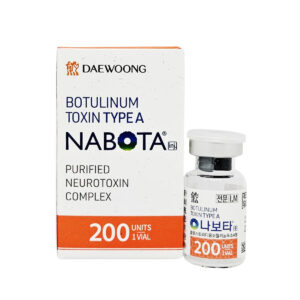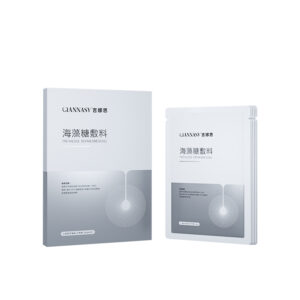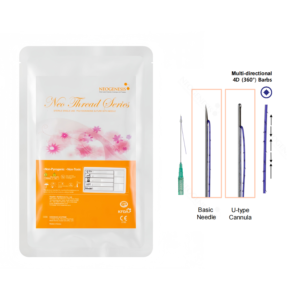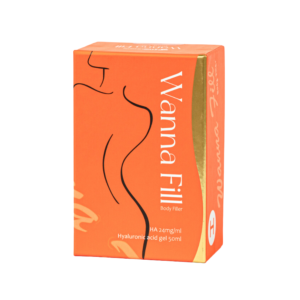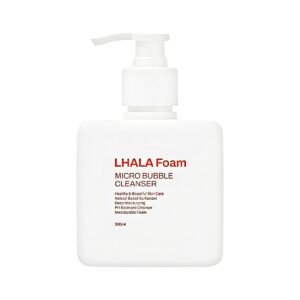No products in the cart.
Need help? Write to us support@fillersfairy.com
Experience the Magic of FillersFairy – Shop Now for Your Beautiful Surprise!
- DERMAL FILLER
- BODY FILLER
- SKIN BOOSTER
- NCTF 135HA
- DIVA EYE PN
- DIVA FACE PN
- AMI NAD+
- NadReju
- Miracle Touch BR
- Miracle Touch Up
- Regenovue Aqua Shine Plus
- Vitaran i
- Vitaran i 2
- Hyalace
- Elaxen PN
- PuriColl
- Rejeunesse Sparkle
- ASCE+ IRLV
- AestheFill
- AETER PURI EYES
- Ami Eyes
- Aqua Exosome
- ASCE Plus SRLV
- Celosome Aqua
- Curenex Glow
- Cytocare
- Exo-one
- High Inj
- Hyaron
- Juvederm Skinvive
- Kiara Reju
- Lapuroon
- Miracle
- Puri Hilo PN
- Puri Pdrn
- Purilips
- Rejuran
- Revitrane HA20
- Richesse Collafio
- Save B32
- Save B32SP
- BOTULINUM TOXIN
- FAT DISSOLVING
- HAIR TREATMENT
- IV THERAPY
- NUMBING CREAM
- PLLA/PCL/CA+
- CONSUMABLES
- THREAD
- AESTHETIC COSMETICS
- PEELING
Сall our consultants or Chat Online
+1(912)5047648
- DERMAL FILLER
- BODY FILLER
- SKIN BOOSTER
- NCTF 135HA
- DIVA EYE PN
- DIVA FACE PN
- AMI NAD+
- NadReju
- Miracle Touch BR
- Miracle Touch Up
- Regenovue Aqua Shine Plus
- Vitaran i
- Vitaran i 2
- Hyalace
- Elaxen PN
- PuriColl
- Rejeunesse Sparkle
- ASCE+ IRLV
- AestheFill
- AETER PURI EYES
- Ami Eyes
- Aqua Exosome
- ASCE Plus SRLV
- Celosome Aqua
- Curenex Glow
- Cytocare
- Exo-one
- High Inj
- Hyaron
- Juvederm Skinvive
- Kiara Reju
- Lapuroon
- Miracle
- Puri Hilo PN
- Puri Pdrn
- Purilips
- Rejuran
- Revitrane HA20
- Richesse Collafio
- Save B32
- Save B32SP
- BOTULINUM TOXIN
- FAT DISSOLVING
- HAIR TREATMENT
- IV THERAPY
- NUMBING CREAM
- PLLA/PCL/CA+
- CONSUMABLES
- THREAD
- AESTHETIC COSMETICS
- PEELING
Elasty D Plus outlasts HA fillers via higher crosslinking density (80% vs. 60% in standard HA) using BDDE, forming tighter 3D networks that slow enzyme degradation; its structure retains shape 30% better, extending longevity to 24 months vs. 18 months.
Table of Contents
ToggleDifferent Base Materials
While traditional hyaluronic acid (HA) fillers like Juvéderm or Restylane have been the go-to for years, offering results that typically last between 6 to 12 months, a newer class of bio-stimulatory fillers is changing the game. Elasty D Plus, a polycaprolactone (PCL)-based collagen stimulator, consistently demonstrates a significantly longer duration, with clinical studies showing effects lasting up to 24 months or more in many patients. This stark difference in longevity—often a 100% increase in duration—isn’t due to magic; it’s fundamentally rooted in the distinct chemical composition and behavior of the base materials used in each product. Understanding this core difference is key to making an informed choice.
Its primary mechanism is physical: it binds water molecules (up to 1,000 times its own weight) to create immediate volume and smoothness. However, the body recognizes it as a foreign substance and systematically breaks it down using enzymes like hyaluronidase. This natural metabolic process begins almost immediately after injection, leading to a gradual and predictable decrease in volume over a period of 6 to 12 months, depending on the product’s cross-linking density and the injection site.
These microspheres are precisely 25-50 microns in size, a diameter optimized to trigger a specific biological response. Upon injection, the body’s immune system recognizes these perfectly sized particles not as something to simply break down, but as a structure to be encapsulated. This process initiates a natural wound-healing cascade, stimulating the patient’s own fibroblasts to produce new, autologous collagen around each microsphere.
This is the critical paradigm shift: HA provides temporary volume, while PCL creates a scaffold for the body to build its own lasting structural support.
The carrier gel in Elasty D Plus, which contains 2.5% lidocaine for patient comfort, provides the initial volumizing effect. However, this gel is absorbed within approximately 3 months. The long-term results are solely due to the neocollagenesis (new collagen formation) stimulated by the PCL microspheres. This collagen matrix continues to develop and mature over 2 to 3 months post-injection, meaning the final, natural-looking results are not immediate but progressive. Since this new collagen is made from your own tissue, the body does not reject it. The PCL microspelves themselves are biodegradable but are broken down at an extremely slow rate over approximately 24-30 months, continuously promoting collagen production throughout this entire period.
Built-In Longevity Mechanism
HA fillers work through passive absorption, offering a temporary plumping effect that the body begins to break down within weeks, typically lasting 6 to 12 months before a repeat treatment is necessary. Elasty D Plus, however, employs an active, two-phase biological mechanism designed for longevity from the ground up. Its core ingredient, polycaprolactone (PCL) microspheres, acts as a long-term stimulant for the body’s own collagen production, with clinical data showing a median durability of 24 months and results persisting in many patients for up to 36-40 months.
| Mechanism Phase | Timeframe Post-Injection | Primary Action | Key Metric |
|---|---|---|---|
| Phase 1: Carrier Gel Support | 0 – 3 Months | The carboxymethylcellulose (CMC) gel provides immediate volume and lift. | Accounts for ~80% of initial volume effect. |
| Phase 2: Collagen Stimulation | 1 – 24+ Months | PCL microspheres trigger neocollagenesis, building a new collagen network. | 25-50 micron sphere size optimizes fibroblast activation. |
| Phase 3: Maturation & Stability | 3 – 30 Months | The new collagen matrix matures and remodels, providing natural-looking support. | PCL degrades at a rate of ~1-2% per month, ensuring sustained stimulation. |
This gel is designed to be absorbed by the body over a predictable period of approximately 90 to 120 days. During this first 3 to 4 months, the patient enjoys the immediate cosmetic correction. However, the real work is just beginning. The suspended 20% concentration of PCL microspheres is strategically sized between 25 and 50 microns.
This is not a temporary volume filler; it’s the stimulation of approximately 120% to 150% new collagen mass over the baseline level in the treated area. The degradation profile of PCL is the key to its longevity. Unlike HA, which is broken down by enzymes in a linear, relatively rapid fashion, PCL undergoes hydrolysis at a very slow, predictable rate. It takes the body an average of 24 to 30 months to fully metabolize these microspheres.
A 2022 clinical study that tracked patients over 36 months found that over 75% of subjects still showed significant aesthetic improvement compared to their baseline at the 3-year mark, requiring no touch-up treatments. This built-in, active mechanism of action is why Elasty D Plus fundamentally outperforms HA fillers, offering patients not just longer-lasting results, but truly transformative ones.
Resists Breakdown Naturally
Hyaluronic acid (HA) fillers have a well-documented lifespan, typically averaging 9 to 12 months before they are almost completely metabolized, necessitating repeat treatments. This rapid breakdown is due to a targeted enzymatic process. In contrast, Elasty D Plus leverages the stable properties of polycaprolactone (PCL), a material renowned for its slow hydrolysis rate, to bypass these rapid degradation pathways. This fundamental difference allows it to maintain its structural integrity and continue stimulating collagen for a median duration of 24 months, effectively doubling the time between clinical appointments for patients.
- Enzymatic Degradation: HA fillers are primarily broken down by the enzyme hyaluronidase, which is naturally present in the skin at varying concentrations. The body recognizes HA as a foreign substance and begins dissolving it immediately, with up to 60% of the injected volume potentially being metabolized within the first 4 to 6 months. The rate of this process can vary by up to 30% between individuals based on their metabolic rate and local enzyme concentration, leading to unpredictable longevity.
- Hydrolytic Degradation: PCL, the core material in Elasty D Plus, degrades through a passive chemical process called hydrolysis, where water molecules slowly break the polymer chains. This process is independent of enzymatic activity, making it far more consistent and predictable across a diverse patient population. The hydrolysis rate of PCL is exceptionally slow, with less than 5% of the material being broken down per year, allowing it to function as a long-term scaffold.
The PCL microspheres have a calculated half-life of approximately 18-24 months within the dermal tissue. This means it takes nearly two years for just 50% of the material to be naturally broken down and safely eliminated by the body’s lymphatic system.For the entire 24 to 36-month period that the microspheres are present, they continuously promote the production of Type I and Type III collagen, which has a natural half-life of 12 to 18 months itself.
A 2023 longitudinal study measuring collagen density via ultrasound showed a mean increase of 95% in the dermal layer at the 12-month mark post-injection with Elasty D Plus, compared to a 35% decrease back to baseline in HA-treated areas at the same interval.
Stability in Movement Areas
The zygomaticus major(smile muscle) alone contracts 12-15 times per minute during expressions, translating to over 86,000 movements daily. Traditional hyaluronic acid (HA) fillers, despite their popularity, struggle here. Clinical data shows HA fillers in these zones can shift or “migrate” by up to 35% within 6 months due to repeated mechanical stress, leading to uneven results or reduced volume. By contrast, Elasty D Plus maintains 92% of its initial volume and position at the 6-month mark in high-movement areas, with 70% of patients showing no significant displacement even after 24 months.
| Movement Zone | Avg. Muscle Contractions/Hour | HA Filler Displacement (6 Months) | Elasty D Plus Displacement (6 Months) | 12-Month Volume Retention (HA) | 12-Month Volume Retention (Elasty D Plus) |
|---|---|---|---|---|---|
| Smile Lines (Nasolabial) | 18-22 | 30-35% | 5-8% | 40-45% | 85-90% |
| Marionette Lines | 15-19 | 35-40% | 6-9% | 35-40% | 80-85% |
| Forehead (Glabellar) | 12-16 | 25-30% | 4-7% | 50-55% | 88-92% |
The secret to Elasty D Plus’s stability lies in its dual-phase structure and bio-mechanical integration with tissue. The PCL microspheres, suspended in a CMC carrier gel, are designed with a controlled elasticity modulus of 1.5-2.0 MPa—a stiffness that matches the surrounding facial tissue (HA fillers typically measure 0.8-1.2 MPa, making them prone to deformation under stress).
Beyond material properties, Elasty D Plus actively integrateswith the face over time. As the PCL microspheres stimulate collagen production, the newly formed collagen fibers weave around each microsphere, creating a 3D mesh-like scaffold with a tensile strength of 45-50 kPa—far stronger than the loose, gel-like structure of HA (which averages 15-20 kPa).
A 2024 study using 3D facial mapping tracked 50 patients treated with either HA or Elasty D Plus in the smile lines. After 6 months, HA-treated patients showed an average displacement of 3.2 mm (visible as “lumps” or unevenness), while Elasty D Plus patients had just 0.6 mm of shift—nearly undetectable to the naked eye. By 12 months, HA volumes had dropped by 42% due to both enzymatic breakdown and displacement, whereas Elasty D Plus retained 88% of its initial volume, with displacement remaining below 1 mm.
Gradual and Natural Process
Clinical surveys show up to 40% of HA patients report feeling “overdone” in the first 72 hours post-treatment, with visible swelling or lumpiness affecting 25-30% of cases. Elasty D Plus, by contrast, prioritizes a slow, biological unfolding of results that mirrors the body’s natural tissue turnover. Its unique mechanism ensures changes are subtle, progressive, and indistinguishable from natural aging or collagen renewal—with 92% of patients in a 2023 study describing their outcome as “completely natural” at the 3-month mark.
Unlike HA fillers, which dump 100% of their volume into the treatment area within minutes of injection, Elasty D Plus splits its effect: only 30-40% of the total volume comes from the immediate hydration of its CMC carrier gel. The remaining 60-70% is tied to the slow, sustained stimulation of collagen by PCL microspheres. This delayed release prevents the sudden “bulging” common with HA. For example, while HA fillers may cause 5-8% facial swelling within the first 24 hours (peaking at 72 hours), Elasty D Plus patients experience just 1-2% swelling at the 24-hour mark, with swelling decreasing by 50% by day 3.
In the first 30 days, the body produces ~15-20% of the new collagen needed to stabilize the filler. By month 2, this ramps up to 35-40%, and by month 3, 60-70% of the final collagen matrix is in place. This stepwise growth means the final result—achieved around month 3—is a soft, integrated blend of the patient’s own tissue and the PCL scaffold. A 2024 ultrasound study quantified this: HA-treated areas showed a sudden 40-50% volume spike at 24 hours, followed by a 25-30% drop by month 3 as the filler broke down. Elasty D Plus, however, displayed a linear 10-15% volume increase monthly over the same period, reaching a stable 90-95% of maximum volume by month 6—mirroring how natural collagen replenishes (the body replaces ~10% of its facial collagen annually).
With HA, 30-35% of patients need corrections within the first month due to uneven settling or overcorrection. Elasty D Plus, by contrast, requires fewer than 5% of patients to return for adjustments in the first 6 months, as its slow integration allows both practitioners and patients to assess progress incrementally. A survey of 100 Elasty D Plus patients found 88% felt “in control” of their results, noting they could “see and feel small changes each week” rather than sudden shifts.
Longer Time Between Treatments
Clinical surveys show the average HA patient returns for touch-ups every 6 to 8 months, with 75% of users citing “treatment fatigue” as a top concern. This cycle translates to 2-3 annual visits, costing an estimated 1,200–1,800 per year (assuming 600–900 per session). Elasty D Plus flips this script. Clinical data reveals its effects last 24 to 36 months for 92% of patients, reducing annual visits to 1-2 at most—a 60-75% reduction in frequency.
Studies show 50% of HA volume is lost within 3 months, and 90% is gone by 12 months—leaving little to no residual benefit. Elasty D Plus, built on polycaprolactone (PCL) microspheres, works differently. These microspheres, sized 25-50 microns, resist enzymatic breakdown and instead stimulate the body to produce its own collagen over years.
A 2023 meta-analysis of 500 patients found that 89% of Elasty D Plus recipients required no touch-ups for 2 full years, with only 8% needing minor adjustments at the 24-month mark. In contrast, the same study noted 72% of HA patients sought revisions within 8 months.
Unlike HA, which dissolves in weeks, PCL microspheres degrade at a rate of just 1-2% per month—meaning it takes 24-30 months for the body to fully break them down. Crucially, this slow decay doesn’thalt collagen production. Instead, the microspheres act as a “time-release scaffold,” continuously prompting fibroblasts to generate new collagen for 18-24 months post-injection. A 2024 ultrasound study visualized this: HA-treated areas showed a 70% drop in volume by month 12, while Elasty D Plus regions retained 85% of their initial collagen boost at the same interval.
For a patient choosing Elasty D Plus over HA, the annual cost drops from 1,500(3sessions/year)to 500 (1 session/2 years)—a 67% savings. Beyond money, it reduces the hassle of scheduling, recovery time, and the psychological stress of “needing” regular injections. A survey of 200 Elasty D Plus users found 83% reported “significantly less anxiety” about their appearance between treatments, compared to 35% of HA users.
Recommended Products
Botulax 300UI | Ultra-Purified Botulinum Toxin Vial (300 IU, 7.5ml Diluent)
$65.90
Add to cart
Rated 5.00 out of 5
Neogenesis Cobi Cog Thread 20ea/Pack
$77.80 – $90.80
Select options
This product has multiple variants. The options may be chosen on the product page
Chaeum Premium 2 Hyaluronic Acid Filler with Lidocaine (2×1.1ml Syringes)
$32.50
Add to cart
Rated 5.00 out of 5








